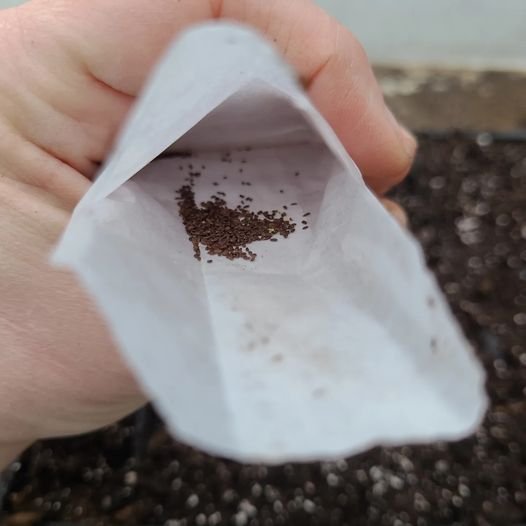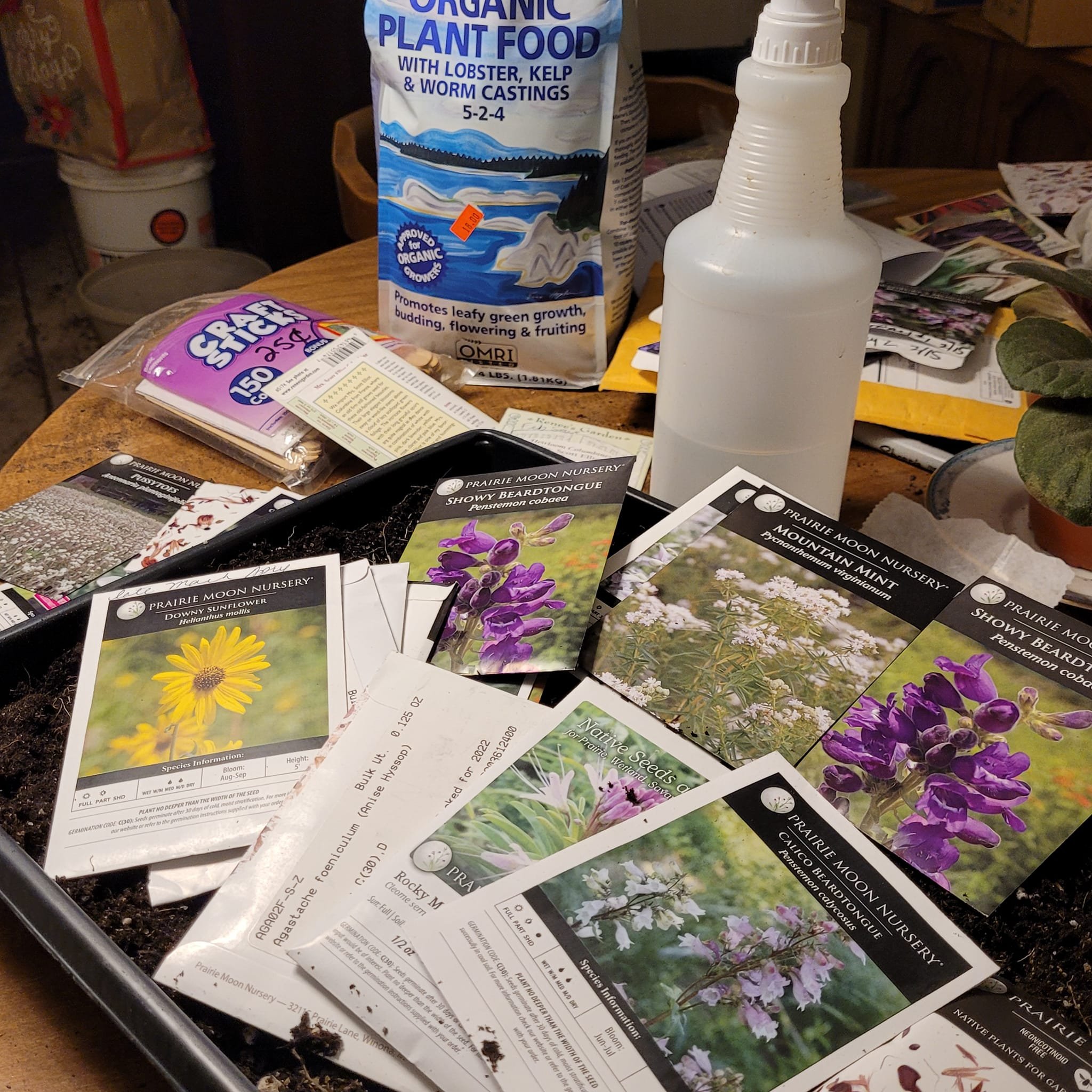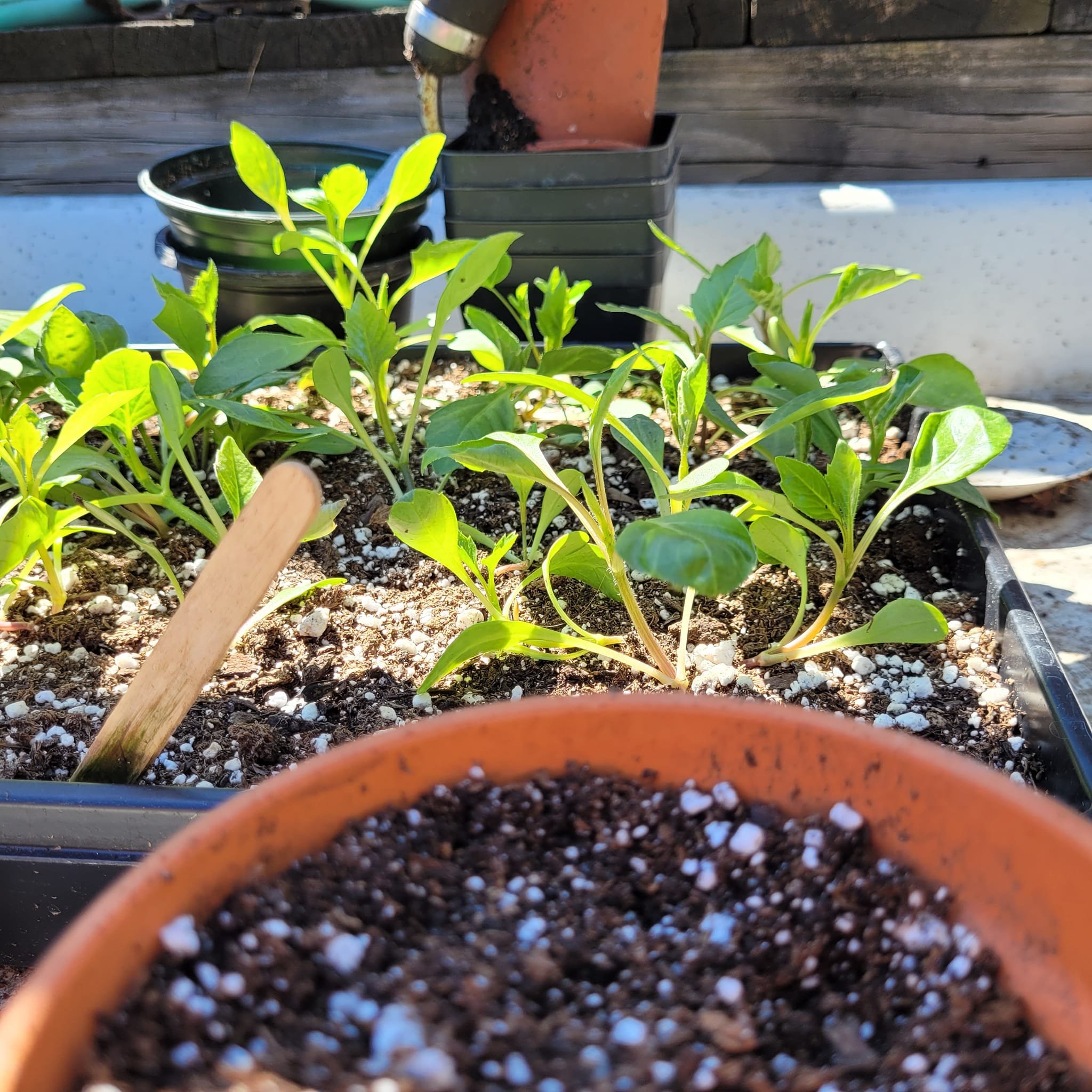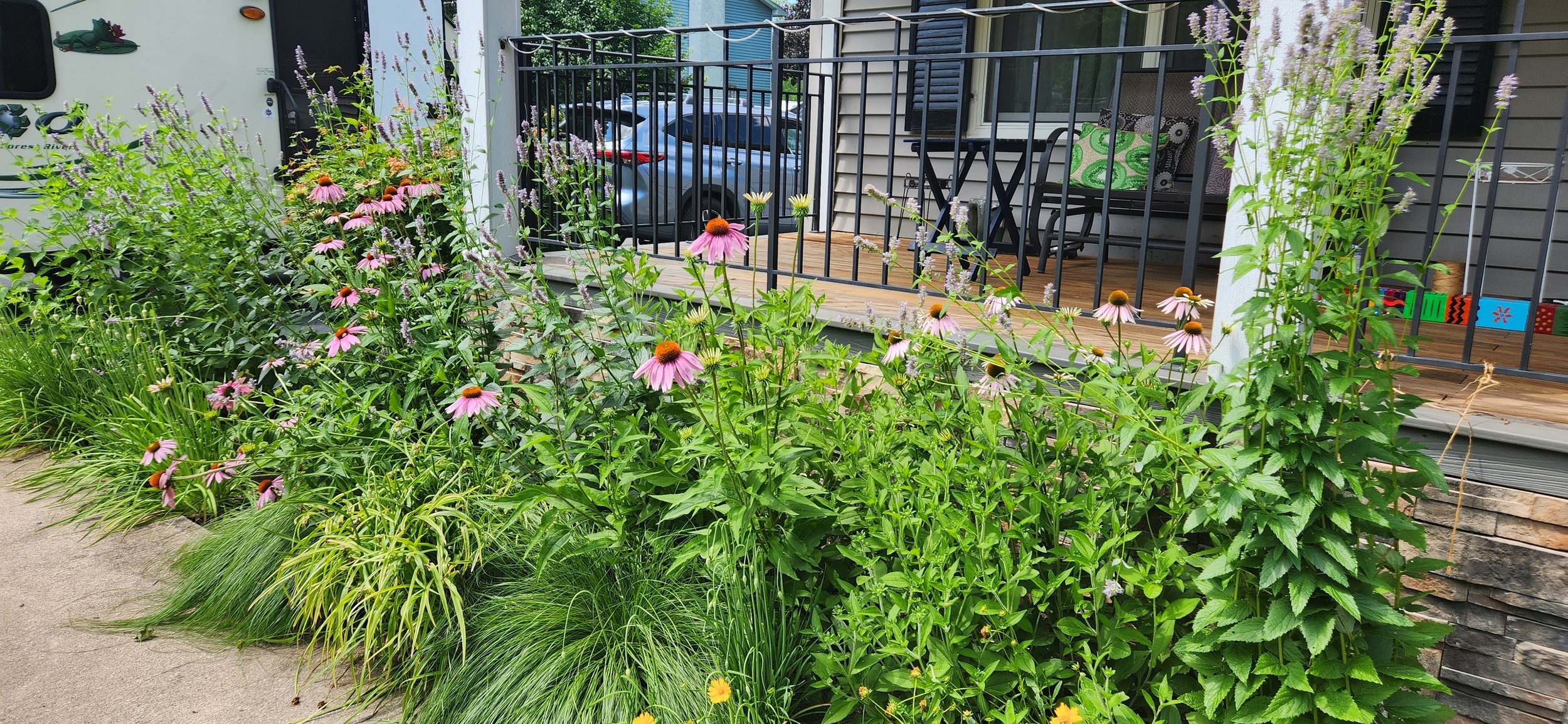Let’s Get Winter Sowing
Today’s post covers WHY Winter sowing seeds works so well for both the seed, pollinators and YOU!
Learn how Winter changes the seed for germination in Spring. Plus get an invite to my Winter Sowing Party AND read tips for successful Winter sowing.
NOTE: these fun tips were discovered the hard way during my chaotic 1st attempt at Winter sowing!
Let’s jump in shall we?
Winter sowing is an easy way to grow for pollinators especially if you are new to seed sowing!
Before we jump into how to Winter sow seeds….
Let’s look at how Nature sows & grows seeds~ after all Nature is the expert!
Many native seeds mature in Autumn through the early Winter.
When you don’t ‘clean up’ your plants & garden in the Autumn~ plants seed heads dry and become a vital food source for birds and other wildlife.
The seeds are spread by wildlife and the winds. Seeds met the soil either in the Autumn or melting snows landing amongst grasses or bare soil. There they wait until Spring to germinate and grow.
Take our beloved milkweed for example
These seeds will be carried on the wind thanks to their ‘fluffy kites’ and land on the soil. Then they’ll spend their Winter tucked under the snow dormant and waiting out the cold days until Spring.
Dormancy protects the milkweed seed from germinating during unfavorable conditions - like cold Winter temperatures.
FUN SEED FACT:
Its changes to the seed coat (called the testa) that does the work of protecting the seeds embryo from the environment AND prevents its growth in less than ideal conditions.
Those conditions are unique for each plant species. Before sowing be sure you know what conditions your seeds require for germination and seedling health.
Talk about small but MIGHTY!
(You can see why I recommend using a toothpick for seed sowing!)
Each of these seeds is protected from less than ideal conditions by its seed coat. 5* days and feet of lake effect snow from Lake Ontario won’t hurt these little seeds!
Don’t assume dormant seeds are slackers though
Just because a seed is dormant (aka laying about) under the snow doesn’t mean nothing is happening to the seeds!
In fact it is the most important time of a seed's life!
During its Winter ‘lie in’ a seed experiences changes that impact its germination and health as a seedling. Seeds even experience different kinds of dormancy from acid and hormone responses like those of abscisic acid (ABA) and gibberellin; all triggered by changes in their environment.
Changes in the seeds environment like temperature, light and moisture trigger hormones in the seeds shell to slowly soften and trigger germination.
It’s the seeds ‘wake up call’ after it’s long Winter sleep
So what’s the role of WINTER?
For many native seeds, longer Winter dormancy means a faster germination and a stronger healthy seedling
All that time experiencing changes from the environment during dormancy actually has a purpose. It the HELPS the seed to germinate and grow!
Winter Sowing Seeds:
There are so many resources to learn the basics of Winter sowing I won’t go over them here.
My favorite is the Wild Seed Project. Simple & straight forward so you can get right to the seed sowing!
Winter sowing is easy and simple.
Plus it’s a great activity for those who don’t love the cold & snowy Winters in CNY!
Come have my Winter Sowing ‘Party’
Are you curious about all this Winter sowing?
Do you LOVE Winter sowing but want to learn a little bit more? Maybe you’d like make some new gardening friends?
Check out my upcoming Winter Sowing Party
Join me and some gardening friends for this online & informal gathering. We’ll be chatting & learning from each other all about Winter sowing both cultivated and native seeds.
You can either join for the fun or Winter sow along with me!
If you’d like to ‘sow along’ you’ll need a few items…
You don’t need fancy gadgets or grow lights to Winter sow– here LESS IS MORE!
Containers that you can fill with at least 3” of soil. Some of my favorites to use are:
milk or water jugs that are washed and clear/opaque~ you want to see through them. (Just pretend your sunlight!)
Clear plastic salad containers
10x20 flats with our without 6packs. If you choose this option you’ll also need the clear domes and twine.
Potting Soil. Now look- don’t get fancy with the potting soil! Do not use mixes like Miracle Grow with those silly “moisture beads”.
All you need is a simple potting mix. Here at the farm we mix our own for seed sowing from sifted compost, coir and perlite plus raw worm casting from Divine Gardens.
In a small tote estimate how much mix you’ll need. Moisten with water until the soil feels like a damp sponge.
Little Bits Piece of aluminum foil, toothpick and spray bottle with warm water
and of course SEEDS!
garden marker & tags. You’ll need a way to know in May what the heck you planted in the jug!
Lessons I’ve learned from Winter sowing…
My first time sowing…
aka FUN CHAOS gardening in January
In the dining room no less! Yes friend, I took over the entire room as you can tell by the buckets of soil in the upper left corner of this pic!
What did I learn from this 1st episode of Winter sowing native seeds?
#1 — Stick to the CODE of what the seed/plant needs!
All seeds have a germination code and ideal conditions to grow. Follow it. Does the packet say C90? then give that seed tray 90 days of cold moist stratification.
#2- CLEAN UP Inside sowing requires a DROP CLOTH under the table to catch soil (and that seed packet of 1000 yep 1000 Maxillian Sunflower seeds)
#3- KEEP NOTES use a notebook, ducttape and have BACK UP! At the party I’ll go over this in depth. I learned from A LOT of mistakes on labeling and the failure of garden markers to identify what was sown in the jugs & trays…
Despite my learning curve at seed sowing & Winter sowing…..
HERE’S WHAT HAPPENED TO THOSE SEEDS!
Winter sown in January ‘22 and grown thru June into strong young plants. Some went home to Becky’s as seedlings later that season. They are now established plants providing food & shelter to pollinators!
I hope this post inspires you to try Winter Seed Sowing …
Want to join me for a Winter Seed Sowing ‘Party’?
Credits & Resources for this post;
Chadwick, Pat. ‘Seed Stratification: Why Does Temperature Make a Difference?’ Piedmont Master Gardeners September 2023-Vol. 9, No 9
Cheng J, Huang H, Liu W, Zhou Y, Han W, Wang X, Zhang Y. Unraveling the Effects of Cold Stratification and Temperature on the Seed Germination of Invasive Spartina alterniflora Across Latitude. Front Plant Sci. 2022 Jun 29;13:911804. doi: 10.3389/fpls.2022.911804. PMID: 35845682; PMCID: PMC9277449.
‘Growing Wildflowers from Seed’ Presentation by Dr. Tom Noland. Wild Ones, Kalamazoo April 30, 202
Finkelstein R, Reeves W, Ariizumi T, Steber C. Molecular aspects of seed dormancy. Annu Rev Plant Biol. 2008;59:387-415. doi: 10.1146/annurev.arplant.59.032607.092740. PMID: 18257711.
McCargo, Heather. ‘Autumn and Winter Seed Sowing in Six Easy Steps’ Wild Seed Project
















